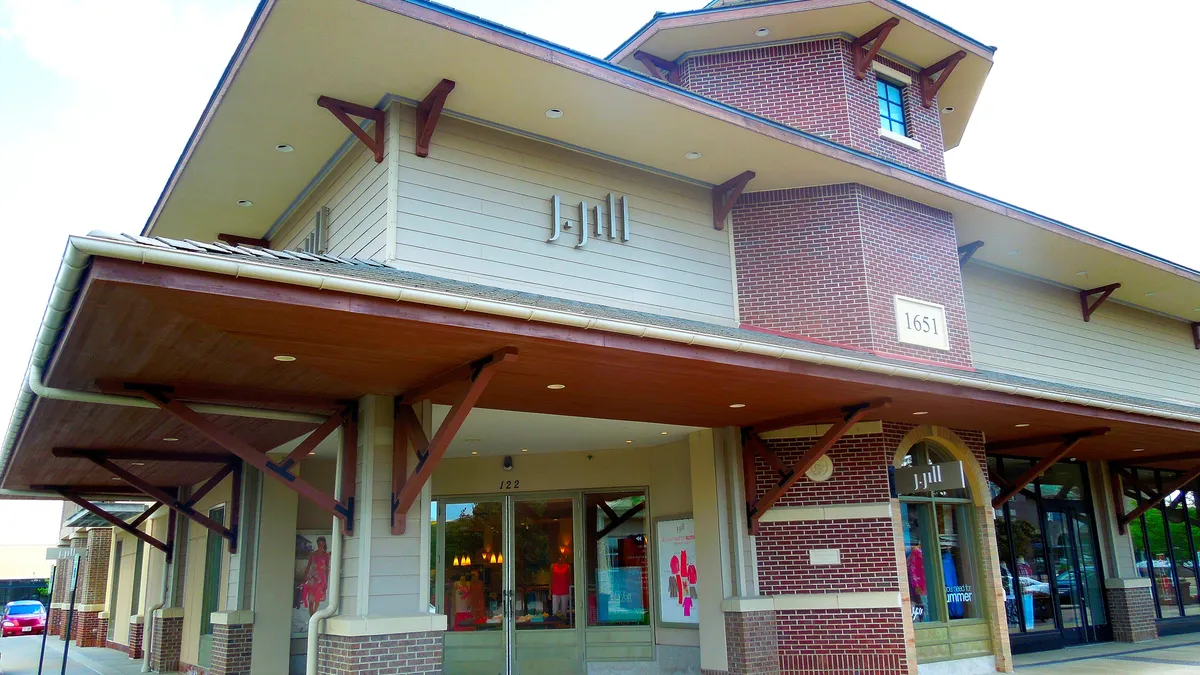Dive Brief:
-
J. Jill on Thursday reported that second quarter net sales fell 49% to $92.6 million from $180.7 million in the year-ago period, with direct-to-consumer sales reaching 71.6% of that, compared to 42.6% last year.
-
Gross profit fell to $55 million from $105.3 million last year, as gross margin edged up to 59.4% from 58.3%, reflecting markdowns to clear inventory last year. Inventory at the end of the quarter was down to $64.2 million from $70 million a year ago. Adjusted EBITDA was a loss of $6.2 million, down year over year from income of $12.6 million.
-
Because the second quarter last year included $97.5 million in impairment charges, the retailer was among the few to narrow its losses in the period. Net loss declined to $18.5 million from $96.7 million in 2019. Loss from operations, which includes a benefit of $0.9 million from permanent store closures, fell to $21 million from a $94.8 million operational loss last year.
Dive Insight:
The clock is ticking for J. Jill, which on Tuesday had announced an agreement with lenders holding 70% of its debt that could stave off a bankruptcy filing.
That agreement requires further consents, however, and each day that passes without it finalized inches the women's apparel retailer closer to bankruptcy protection.
With most of its stores temporarily closed for half the quarter, J. Jill scrambled to boost e-commerce and trim expenses, which paid off, according to a statement from Interim CEO James Scully. "I am pleased with our disciplined approach to inventory management and believe we are taking the right actions to further strengthen our financial position," Scully said. "I am proud of all of our teams for their hard work and dedication to J. Jill, and we look forward to driving further progress as we move through the balance of the year and beyond."
Even without the added challenges brought on by the COVID-19 pandemic, which has not only forced stores shut but also severely drained demand for apparel, J. Jill has been faltering. Linda Heasley stepped down as CEO at the end of last year, as store comps continued a downward slide.
While some apparel retailers saw sales and margins meaningfully improve as stores reopened, J. Jill has so far not been so lucky. With a customer base of mostly older women, the retailer is unlikely to see much advantage to a back-to-school that, while much scaled back due to the pandemic, is helping some retailers reverse the steep declines seen earlier in the year.
J. Jill closed five stores in the second quarter, ending with 281. The company expects to end the year with about 275 stores, with most of the rest of the permanent closures taking place during the current quarter, per its release.















